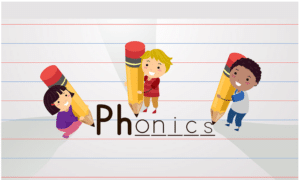Phonics and Phonemic Awareness: Understanding Their Importance and Function
When it comes to learning to read and write, phonics and phonemic awareness play vital roles in a child's development. These two foundational skills are key components of early literacy education. In this article, we will explore what phonics and phonemic awareness are, their significance in reading acquisition, and how they work together to support language skills. Let's delve into the world of phonics and phonemic awareness and uncover their fundamental principles.
Understanding Phonics:
 Phonics refers to the systematic instruction of the relationship between sounds and the letters or groups of letters that represent them. It involves teaching children how to connect individual sounds (phonemes) with specific letters or letter combinations (graphemes). Phonics instruction helps children understand the correspondence between spoken and written language, enabling them to decode words and read fluently.
Phonics refers to the systematic instruction of the relationship between sounds and the letters or groups of letters that represent them. It involves teaching children how to connect individual sounds (phonemes) with specific letters or letter combinations (graphemes). Phonics instruction helps children understand the correspondence between spoken and written language, enabling them to decode words and read fluently.
Phonics teaches children the basic rules and patterns of the language, starting with simple letter-sound associations and gradually progressing to more complex phonetic patterns. By understanding phonics, children gain the tools to sound out unfamiliar words, recognize common spelling patterns, and develop reading and spelling skills.
Exploring Phonemic Awareness:
Phonemic awareness, on the other hand, focuses on the ability to identify and manipulate individual phonemes, which are the smallest units of sound in language. It involves recognizing and working with the sounds of spoken words, such as blending, segmenting, and manipulating phonemes. Phonemic awareness is an auditory skill that does not involve written language.
Through activities like rhyming, blending sounds to form words, segmenting words into individual sounds, and manipulating sounds to create new words, phonemic awareness helps children develop a strong foundation in language and phonological processing. This skill allows them to distinguish and manipulate individual sounds, which is crucial for later reading and spelling success.
The Synergy between Phonics and Phonemic Awareness:
Phonics and phonemic awareness are complementary skills that work hand in hand to support reading development. Phonemic awareness lays the groundwork by helping children become aware of the individual sounds within words. This auditory skill is a precursor to phonics instruction as it provides children with a deep understanding of the sound structure of language.
Once children have developed phonemic awareness, phonics instruction builds upon this foundation by connecting sounds to written symbols. By learning letter-sound associations and phonetic patterns, children gain the ability to decode words, recognize spelling patterns, and develop fluency in reading and writing.
The synergy between phonics and phonemic awareness enhances reading comprehension, word recognition, and spelling proficiency. Phonemic awareness helps children break words into sounds, while phonics helps them connect those sounds to specific letters or letter combinations.
Educators often employ a systematic and explicit approach to teach phonics and phonemic awareness. This involves providing direct instruction, engaging in multisensory activities, and offering ample opportunities for practice and application.
Conclusion:
Phonics and phonemic awareness are foundational skills that play a vital role in early literacy development. Phonics instruction focuses on teaching the relationship between sounds and letters, enabling children to decode words and read fluently. Phonemic awareness, on the other hand, focuses on developing children's ability to identify and manipulate individual sounds in words, laying the groundwork for phonics instruction.
By combining the power of phonics and phonemic awareness, children develop strong language skills, enhancing their reading, writing, and spelling abilities. These skills serve as building blocks for future academic success and create a solid foundation for lifelong literacy.
